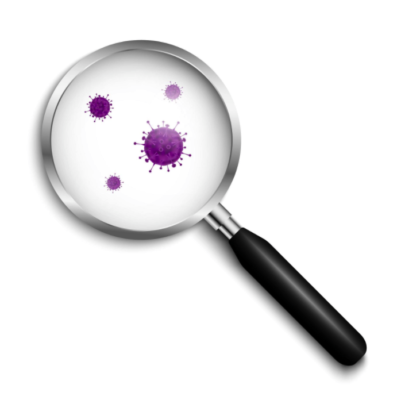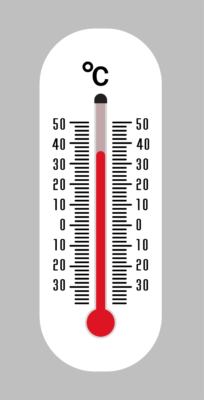Information, pH Meter
pH Meter Mistakes to Avoid
Let’s take a look at the most common mistakes we see in using pH meters and what you can do to get the most out of your meter.

USING AN EXPIRED ELECTRODE
As noted above, electrodes don’t last forever. If you’ve had your meter for over a year and you find that your readings aren’t quite what you think they should be, you might have a bad electrode. That means you’ll need a new electrode or, in the case of a non-replaceable electrode meter, a new meter.
DRY STORAGE
pH Meter electrodes work based on a complicated system of chemico-electric interactions. One of the most important parts of that system of interactions is a ‘gel layer’ of hydrated glass. If that hydrated layer on the glass ever dehydrates, resuscitating the electrode is nearly impossible. Each meter includes a small cap over the electrode filled with a storage solution that maintains electrode hydration and helps to prolong the life of the electrode while it is being stored.
Many customers forget to refill that smaller cap with storage solution before putting their meter away after use or, worse, will even store it without the cap. This will dehydrate the electrode, necessitating a rehydration process.
To prevent dehydration, be sure to fill the smaller with storage solution and secure the cap tightly over the electrode after each use. If your electrode does dry out, soak it overnight in a storage solution to resuscitate it. It will probably work again, but repeated dehydration is bad for the electrode and will shorten its lifespan.

LEAVING ELECTRODES DIRTY
pH testing can be a dirty business. Sticking the electrode in hot milk, fermenting wine, or wet soil can cause buildup on the surface of the electrode that is undetectable to the eye. Fats, sugars, or minerals can accumulate on the electrode resulting in slower or even faulty readings.
To make sure your electrodes are clean, use a pH electrode cleaning solution. The cleaning solution is balanced for the electrode and is a great way to make sure you get accurate and fast readings every time. Use the cleaning solution every time you use your meter for optimal electrode life.
STORING IN WATER
Another common mistake that people make with their pH meters is storing the electrodes in deionized water. While this seems like a good idea for keeping the electrode hydrated, it can actually destroy your electrode more quickly.
Because of the ionic nature of the electrode glass itself, when it is stored in ion-free water, the Law of Diffusion describes how the ions will leave the glass to try to establish an ionic solution in the water itself, creating more equilibrium. That exodus of those ions from the glass to the liquid depletes the glass of its pH-measuring qualities, rendering the electrode useless. To properly store your pH meter, it is imperative that you use a pH-electrode storage solution. The storage solution is hydrating and is properly balanced with the right kind of ions. If you suddenly run out of storage solution during a testing process, deionized water can be used in the very short term until more storage solution can be obtained.
NOT CALIBRATING PROPERLY
pH meters work based on comparison to known quantities. That comparison is established using buffer solutions with a known pH. To properly use a pH meter, you have to calibrate it for every measurement session using a known buffer solution. This will tell the meter what a 7.00 pH ‘feels’ like so that it knows what to expect when inserted into your sample. Without that buffering sample, the electrode will not have any reference for the voltages that will be created, and will therefore not be accurate.
As already noted, calibrating every time you use your meter is the best practice. But you also have to calibrate correctly. If you’re measuring something that is basic, always calibrate first using the 7.00 pH reference buffer and the 10.00 pH buffer to establish a proper reading. If you’re measuring something on the acidic side, calibrate using the 7.00 pH reference buffer first and then use the 4.00 pH buffer.
NOT SUBMERGING THE ELECTRODE
This mistake is common and easy to fix. The pH meter reads the total electrical potential difference on the surface of the electrode, so, if half of your electrode is outside the sample solution, it’s missing half of the reading. That kind of difference is not acceptable!
TESTING AT THE WRONG TEMPERATURE

pH is actually temperature-dependent. At higher temperatures, pH decreases, meaning that acidity increases. While the physics behind that concept is pretty high level, what it means for you is not. To get a true reading on your sample, you must measure it at the same temperature as your buffering solutions. If you calibrated at room temp, you need to measure at room temp as well, meaning that the best practice is to take a small sample and cool it quickly to room temperature before testing. Otherwise, you can get wild swings in pH readings.
Another reason to cool your sample is that electrodes degrade faster at higher temperatures, meaning shorter electrode life. And in fact, have an upper limit of functioning. You cannot use your pH meter on anything hotter than 50°C or it will burn out. Keep a good thermometer on hand for your pH testing and wait until the sample is at room temperature about 21°C for best results.
If you need more information on any of the above steps or need a hand with your pH meter, contact one of the PMI Sales Team at +27 11 728 6099, being helpful is what we do best!

